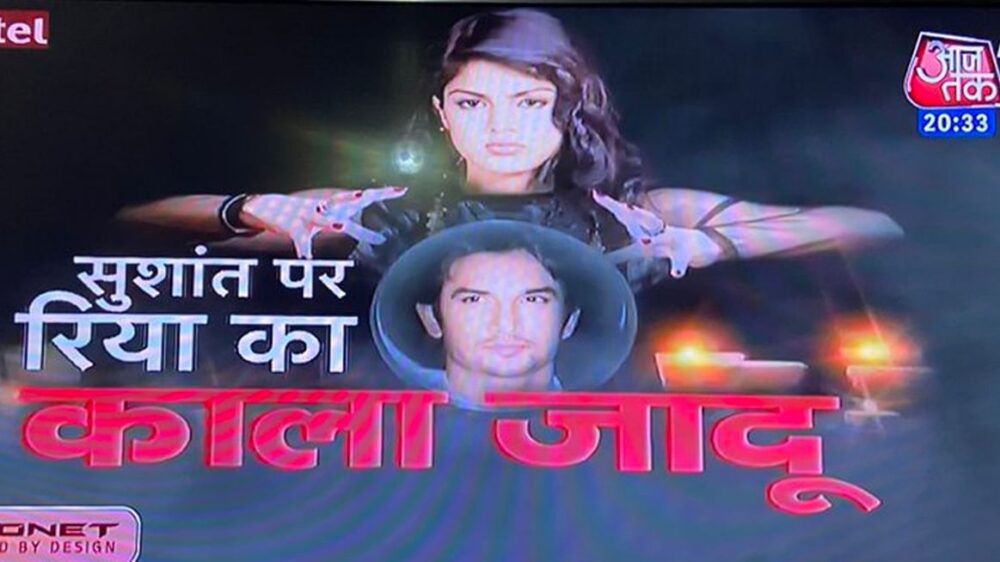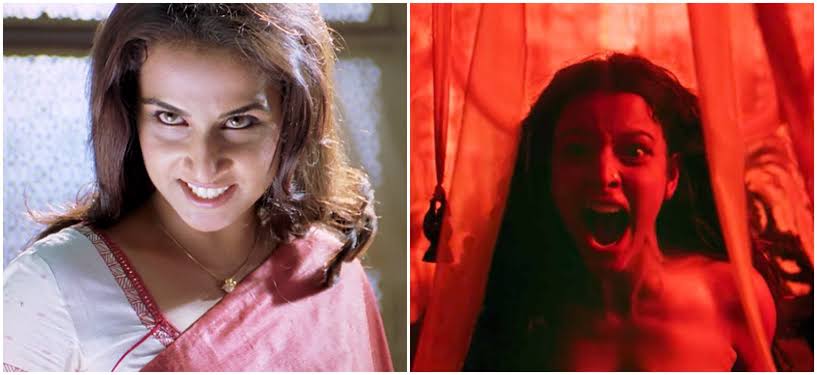The controversy over Bollywood actor Sushant Singh Rajput’s death by suicide is just refusing to die and takes a new turn every other day— from BJP leader Subramanian Swamy’s conspiracy theories, calls for CBI probe to Rajput’s father blaming his former girlfriend Rhea Chakraborty.

Rajput’s family lodged an FIR against Rhea Chakraborty under various sections of the IPC, including abetment to suicide. Soon, people on social media began to accuse Chakraborty of performing ‘black magic’ on the actor, saying it may have driven Sushant to his death. A recent Aaj Tak headline screamed “Sushant par Rhea ka Kaala Jaadu” with a tackily photoshopped picture of Rhea Chakraborty over a glass orb with a smiling Sushant Singh Rajput helplessly trapped in it. News18 India, Zee TV, India TV, and countless other channels quickly followed suit to discuss in ‘breaking news’ segments how black magic done by Rhea played a role in the suicide case.

While Chakraborty has refused to comment since the matter is now sub-judice, Twitter has been flooded with stereotypical posts against Bengali women because Rhea Chakraborty is a Bengali and their orthodox view that every Bengali woman knows and perform Black magic.
Trolls have labeled Bengali women as “gold-diggers”, “manipulative”, “dominating”, “bish kanya” (poisonous daughter), who “use their husbands for ATM”, who know “how to call ghosts” and “ruin” men’s careers. This mockery in the name of journalism was how the media by and large decided to treat the coverage of Chakraborty’s alleged involvement in Rajput’s suicide.
The allegation and charges put on Rhea Chakraborty by the family of Sushant Singh Rajput is not just limited to Rhea but people it amplifies the attack and target all Bengali women that they all are the same like Rhea (Rhea Chakraborty is not proven guilty and the case is in court under trail but does it even matter for people? All that matters is to create memes and give final verdict from their side)
While many more Bengali women continue to face such bias, this is not without precedent Deep-rooted misogyny and racial bias. Branding women as daayin (witch) is common across states but how Bengali women landed in the vortex of all this is something even rationalists are scratching their brains over what goes behind the stereotyping of the Bengali woman as the long-haired, red-lipped, irresistibly bold enchantress who turns everyone into puppets of her will?
Guwahati-based academic Gopa Majumdar has an answer. “Men often tend to listen to someone they respect and consider to be better than them. Bengali women perhaps have that effect on men and everyone else because of their hard-earned achievements compared to their counterparts in the rest of the country.”
But it is, she adds, the hyper-sexualized image of Bengali women created in popular culture — literature and cinema, especially Bollywood — that has also added to the narrative. “After all, Indians are famous for equating the inexplicable with the paranormal. So, the same goes for natural charm.”

The first step towards unpacking this stereotype is dissecting how we view Bengali men aka the ‘Bhadralok’. Traditionally, we have relegated Bengali men to being artistic soft souls and “thinkers” who whine vocally about the government but only a handful possess the gumption to actually drive change. This depiction is also convenient since it gives further justification to their women looking to ‘entrap’ men outside of their community who have considerably more earning potential.
The trope of the dangerous Bengali woman has seen many evolutions, remaining as problematic in each rendition. The seductress who lures in men with her ample bosom delicately wrapped in tant sarees – think Komolika. The big-eyed bombshell who “weaponizes her feminine wiles” to attract gullible men – Rhea Chakraborty.
But rationalist Prabir Ghosh is still at his wit’s end over the “magical spell of Bengali women”. “Incidents of torturing women by labeling them as witch were rampant in Purulia district of West Bengal. Even five years ago, such incidents were quite common. But now it’s no longer the case,” says Ghosh, president, Rationalist Association of India. Stating that there’s no such thing as black magic, he throws a challenge to anyone who can prove its existence to the organization.
This isn’t a problem exclusively faced by Bengali girls though. I’m sure we’ve all heard and been complicit in enabling some or the other form of broad-strokes judgments. Be it for other communities, like the feisty ‘Marathi Mulgi’, the aggressive ‘Sikhni’ or the docile and homely ‘Gujju chhokri‘.

Stereotypes are simply shortcuts for our brains to make snap judgments and navigate the world. However, we run into a problem when snap judgments reduce complex human beings into tropes. We need to start viewing people as individuals more than their group identity, by their achievements and successes, by their positive examples. Better focus on the positive side of individuals and mention it rather than ridiculing them, making fun of them if they take some harsh step than commenting this is not the option or RIP.
[zombify_post]




